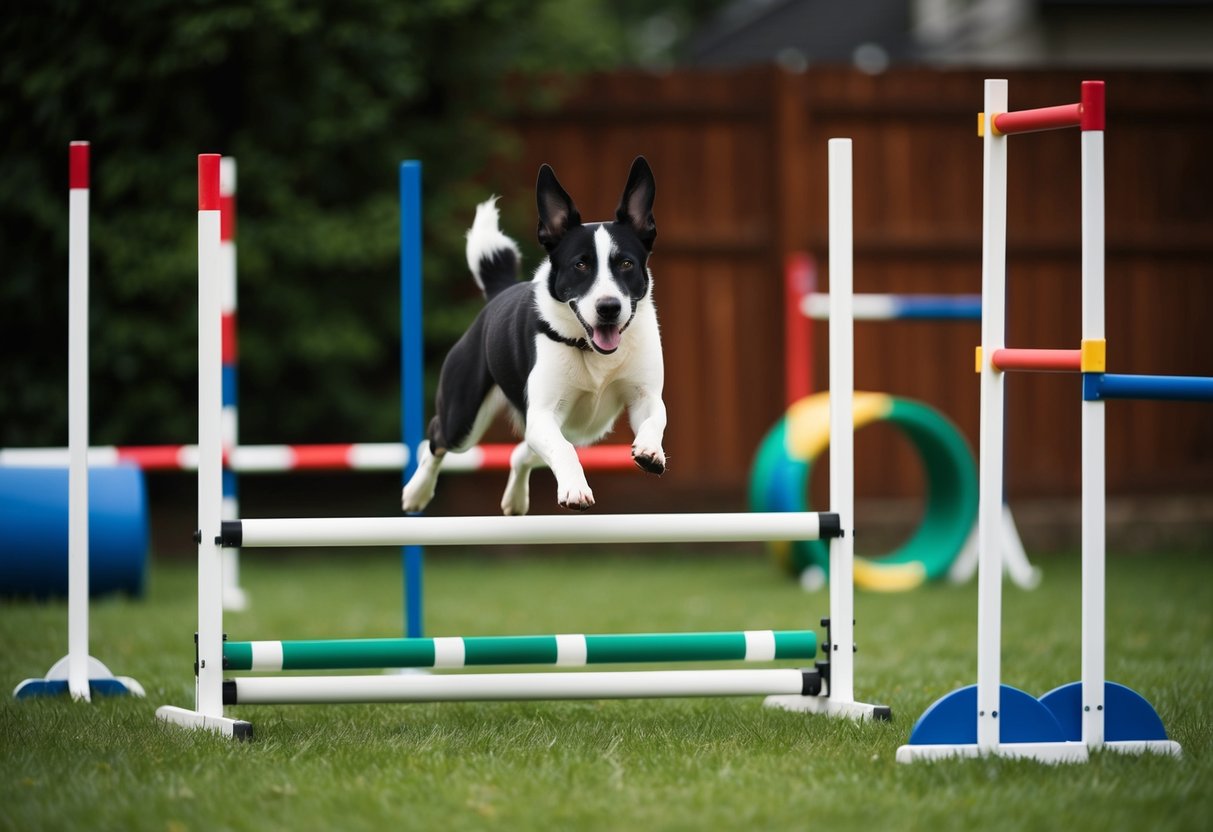
Measuring Progress and Setting Goals
Engaging your dog in agility training at home requires consistent evaluation and setting realistic targets. Tracking fitness improvements and defining milestones are essential to maintain motivation and effectively monitor advancement.
Tracking Improvements in Fitness and Skill
Monitoring your dog’s fitness and skill progression is crucial. Regularly timed performances and noting errors provide insights into areas needing refinement. Observing physical endurance and speed change over time reflects enhancements in overall fitness. It’s beneficial to record these results in a journal or a training app, allowing for easy reference to past performances. Visual assessments can indicate agility, while weight and vet checkups provide health benchmarks. Evaluating their response and adaptability to new obstacles indicates both physical and cognitive improvements. This combination facilitates a comprehensive understanding of their progress as they train.
Establishing Achievable Milestones
Collaboratively setting realistic goals ensures both you and your dog remain motivated. Begin with small steps, such as increasing the completion speed of a simple obstacle course. Gradually advance to more challenging tasks, like mastering a specific agility element. If preparing for agility competitions, align goals with competition standards. Ensure milestones are measurable and time-bound, clearly defining the desired outcome within a specified timeframe. Regular reassessment helps adjust milestones, accommodating any fluctuations in performance or physical condition. This structured approach fosters improvements and keeps the training process engaging and productive for both trainer and pet.
Preparing for Dog Agility Competitions
Participating in agility competitions requires an understanding of the rules of the sport and an appreciation of the differences between training at home and competing on professional courses. Preparation is key, and familiarizing oneself with both trial rules and course variations is crucial.
Understanding Agility Trial Rules
Dog agility trials have specific rules that govern how events are conducted and scored. Each competition organization, such as AKC or USDAA, sets unique guidelines regarding course design, dog safety, and handler conduct. Dogs are judged based on speed and accuracy, requiring them to complete complex obstacles without errors. Penalties are given for mistakes like knocking down bars or stepping out of bounds.
Knowing what different organizations expect is vital. Study the rulebooks meticulously to understand regulations such as obstacle specifications, allowable times, and point systems. Comprehension of these rules enables handlers to train their dogs effectively and mentally prepare for what to expect at an event. Becoming familiar with how judging works aids in strategizing runs and achieving competitive success.
Competing at Home vs. Professional Courses
Training on a home-based agility course offers flexibility and comfort, but there are distinctions when transitioning to professional settings. Home courses might not fully replicate the challenges posed by official competitions. Variations in ground surfaces, obstacle types, and environmental distractions can affect a dog’s performance.
Competing on professional courses often requires dogs to adapt quickly to new surroundings. This includes exposure to different obstacle textures and handling varying weather conditions. Handlers should gradually incorporate diverse settings and practice routines to accustom their dogs to unpredictable course elements. Regular participation in local events can serve as practice, enhancing competitive readiness.



